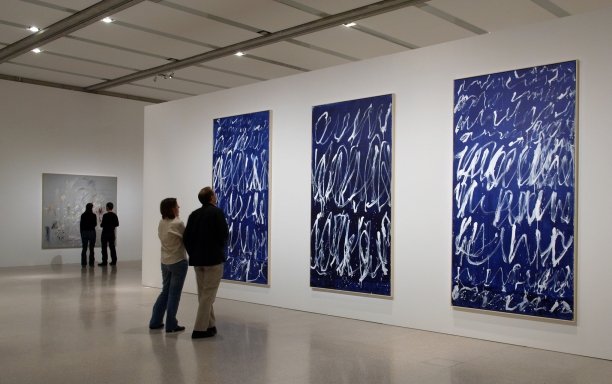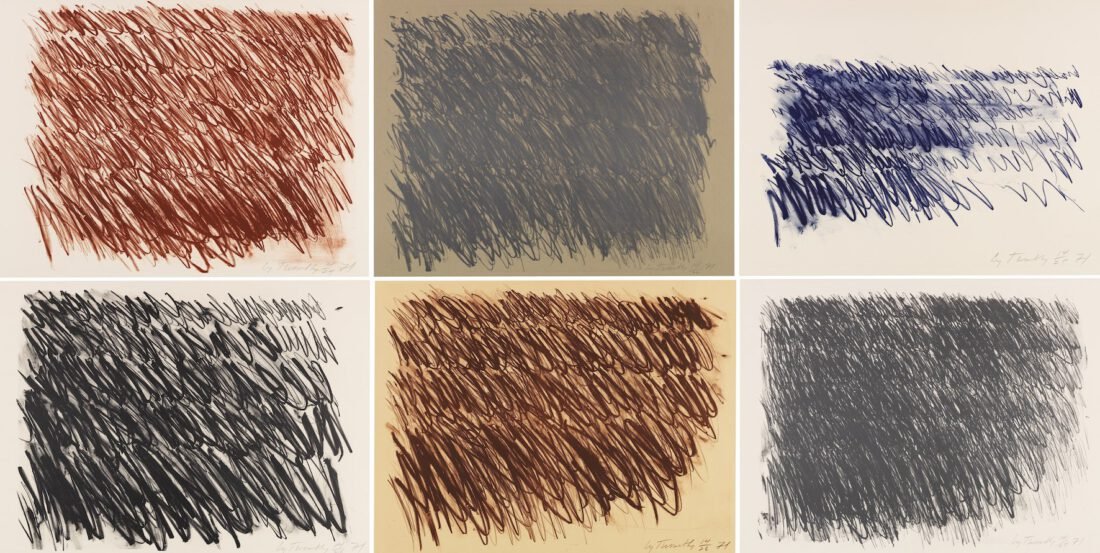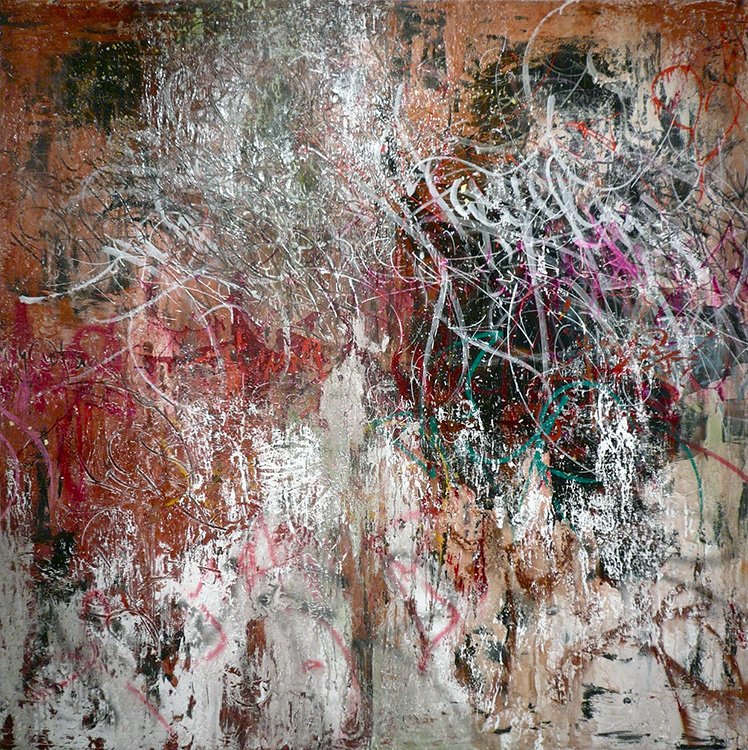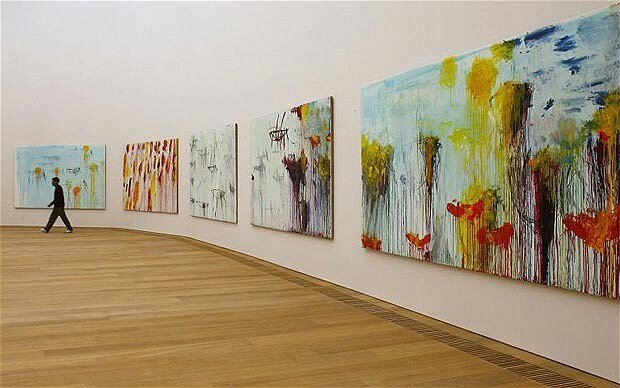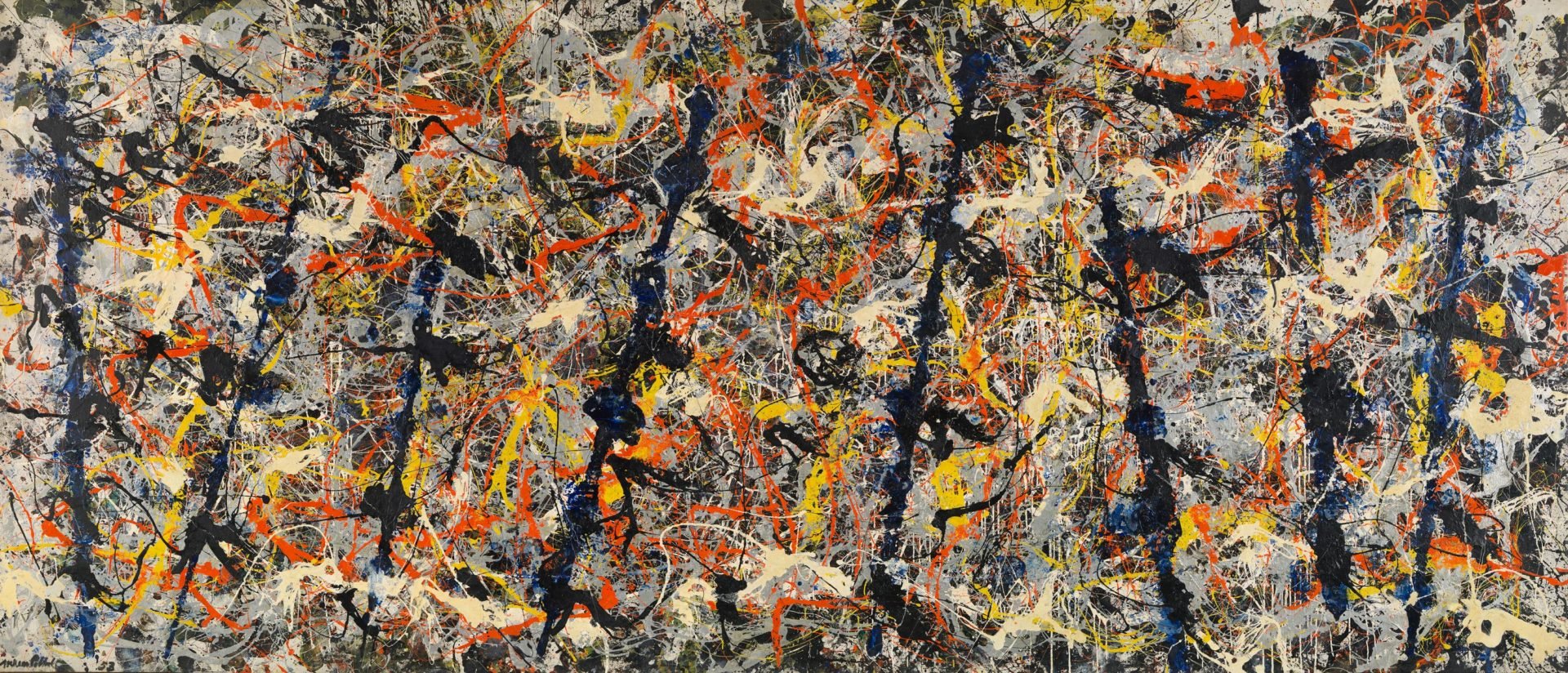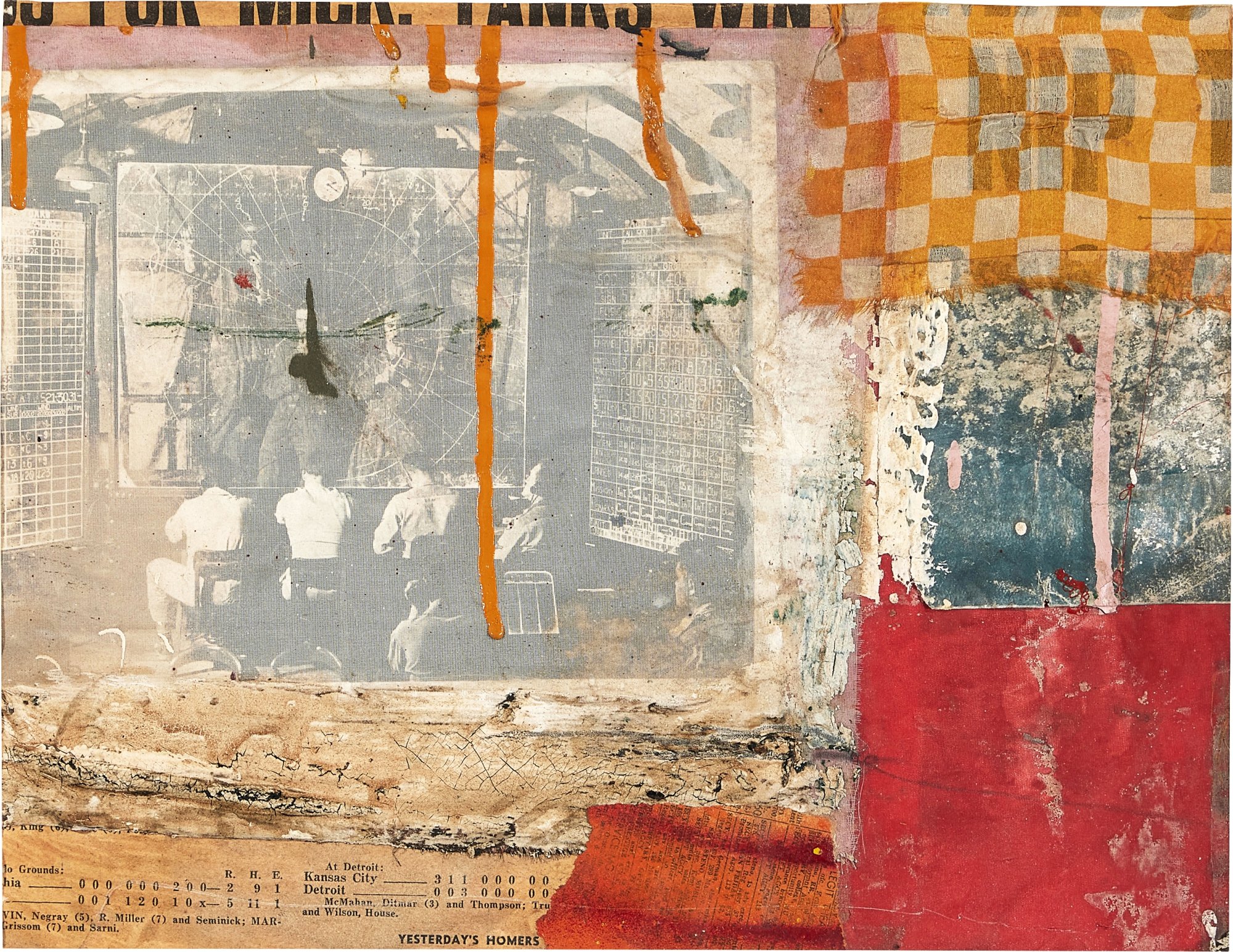'My 5 year old could paint that!'
Oh I love this statement!. It brings so much joy to my soul when someone says this about an artwork, which is usually abstract or a ready-made sculptural piece. Recently, I had an online debate (of sorts) with someone who said something along lines, "Money does not give you taste." (please refer to below image) in reference to a Twombly artwork acquired by a state-run art gallery, In case you're unfamiliar, Cy Twombly was an American painter (born 1928) renowned for his highly evocative abstract paintings. He was recognised as an abstract expressionist who created vivid and expansive canvases.
Cy Twombly, Three studies from the Temeraire, 1998-1999 oil on canvas. Purchased Art Gallery NSW Australai
On the face of it, I understand that his work can seem like a bunch of hapless scribbles placed randomly on a very large canvas. Comparing such work to a photo-realistic or even realistic painting might lead one to deem it inferior due to the seemingly absence of skill and deliberation. So, I do grasp her perspective. If we consider high craftsmanship as the compass for determining the quality of artwork, then I comprehend the reasoning behind it. It does require time, effort, and patience to create artwork at that level.
However, if we were to judge "good" artwork solely based on this level of technical skill, then we would limit ourselves within a narrow scope of possibilities. We all acknowledge that art is subjective and reflective of personal taste, which is truly marvellous. Just imagine if the world consisted only of one style of painting, sculpture, music, or even fashion—it would be so dull! This is the joy of being human: the ability to express ourselves through the diverse narratives of art, in whichever form that might be for you.
By examining Twombly's work through the lens of art history and delving into his perspective and artistic intentions, we are able to perceive beyond the surface and aesthetics. We are presented with an entire oeuvre of work which stretches the boundaries of what art can be.
Art is meant to challenge us. It should make us think, it should inspire and fascinate us. This is what Twombly’s work does. Love it, or hate it, this is what art is about. Sure, we can admire a work which is technically brilliant. I certainly do, but does it challenge you? Does it make you think? Does it inspire you to know more about a subject?
Twombly’s work delves not just in the realm of art but also speaks about spiritual concepts. His marks were part of a process of unconscious writing. He would create works in the dark, a form of automatic writing which is seen in spiritual circles. In this process, one steps away from being the ‘artist’ and lets their ‘Daemon’ take over. As I have written about in a previous blog.
After art school, he served in the army as a cryptologist, which profoundly influenced his work. Following this experience, his art evolved into a language of marks. The act of mark-making is the artistic handwriting of all artists, and developing a unique artistic style akin to one's own handwriting is a triumph in the art world. This is precisely what Twombly succeeded in doing. When you enter a gallery, you can immediately recognise his work by his distinctive mark-making style.
Many years ago, I had the fortunate experience of corresponding with the talented and beautiful Austrian/Australian artist Judy Cassab (1920-2015). She encouraged me to discover my own mark-making style, and her words have stuck with me. The ability to push the boundaries of what art is and find your own unique mark-making style is what sets you apart in the art world. Your mark is your personal thumbprint; no two marks are the same. Twombly was a master of this process.
His work also reflects and pays homage to art history. Living in Rome, he drew inspiration from Italian art history, which is conveyed in his work through his interest in frescoes. He moved to Italy in 1957 and married Italian artist Tatiana Franchetti .
Although his work may initially appear "childlike" or even flippant on the surface, it is, in fact, a thoughtfully constructed piece of art. You may not want to hang Twombly's artwork on your wall, or you may not even like it, but you can appreciate it for its artistic value. You can appreciate his ability to push the traditional ideas of mark-making, his artistic and historical references, and his role in an artistic movement that included artists such as Pollock and Rauschenberg * see below images in order left to right.
Some might say, well, I don’t know art history. I don’t know about all this art jargon. I understand this sentiment, as it can be overwhelming, even for me. However, if we approach art with a curious mind rather than a judgemental one before making significant decisions, imagine how we can broaden our perspectives on the world at large.
As children, we paint with carefree abandon. We enjoy making marks and playing. This is truly something special. Yet, as time passes, we try to make our artwork more "real" because we deem that is what constitutes good art. Society often deems work as "good" if it resembles a photograph or looks like an object. When our work falls short of these expectations, we may give up on making art, because we see ourselves as not good enough. Creating work that is playful, full of colour, and expressive as adults can be challenging due to these all societal notions of what constitutes "good" art.
I challenge you on two levels. The next time you are in an art gallery and a work challenges you, do some research on the artist. Understand their background, their philosophy, and their oeuvre, and then make a call.
Finally, take out your crayons and paper, turn off the mind chatter, and simply enjoy the act of making marks. Let go of the notion of whether it is "good" or "not good" and truly relish the process of painting or drawing. Watch what unfolds.
"My line is childlike but not childish. It is very difficult to fake... to get that quality you need to project yourself into the child's line. It has to be felt." Cy Twombly
Yours in art,
Bec xoxo


